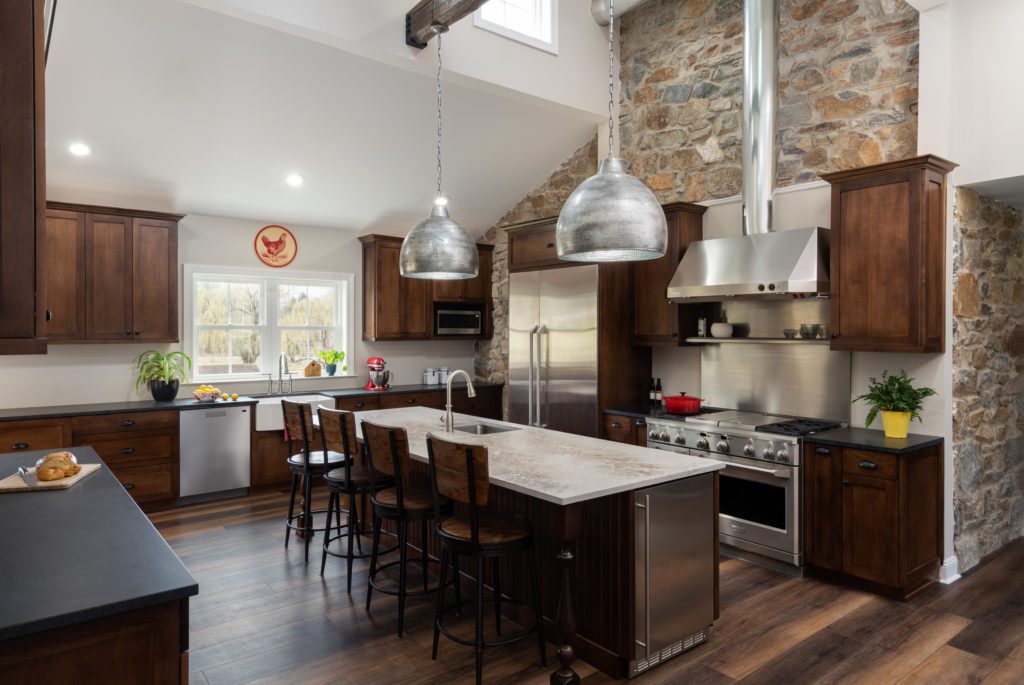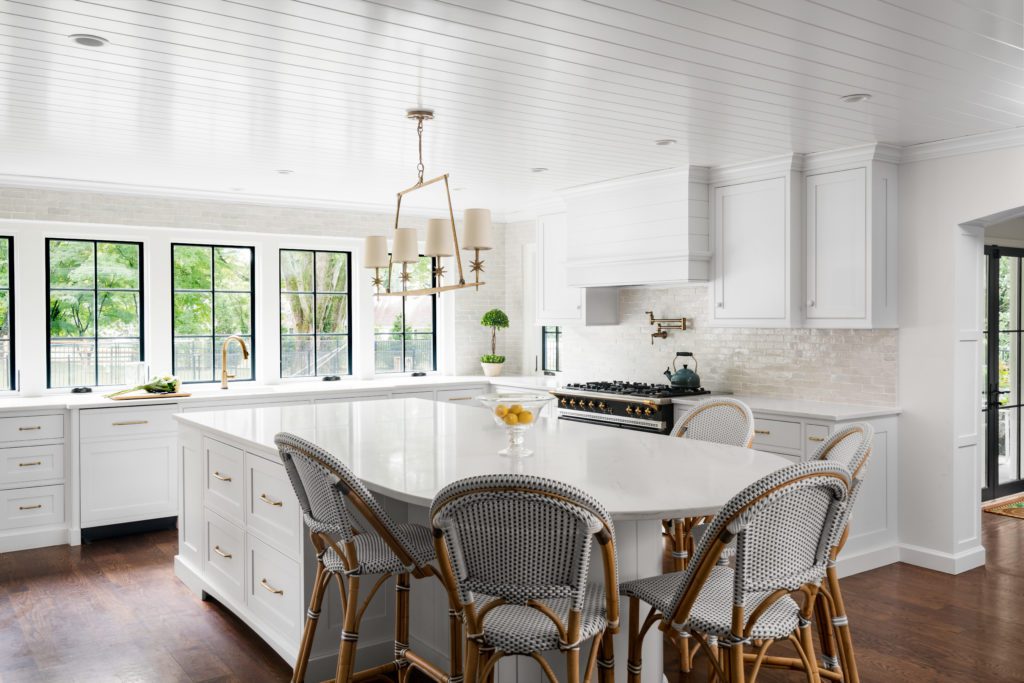A guest post by Liz Walton
After months of planning, preparation, and construction, you are finally ready to photograph your work. If you’re like me, the photoshoot of any space marks a finite end to that specific project. There are no more loose ends, the punch list items have been taken care of, and you and your client can sit back and revel in the journey. While studying interior design at Drexel University, I spent hours pouring over the glossy images of Architectural Digest, Veranda, and Traditional Home to name a few and I wondered how on earth designers made those rooms look polished, yet inviting. Fast forward almost 20 years and I now have a personal understanding of what goes on behind the scenes of these photo shoots – and I want to share my secrets with you.
Photographing a kitchen can be tricky. Discuss a shot list with your photographer prior to shoot day. Have a plan for unusual spaces like narrow corridors and covering unsightly outlets which can often obstruct a good shot. Finding the right angles and styling your space takes practice, patience, and perseverance. I have made many mistakes, left open shelves bare, forgot to photograph a special detail, and have completely missed photographing a wall of cabinetry which I later and to this day regret. After designing and styling kitchens for over 17 years I have learned a thing or two and am sharing my best tips on photographing any kitchen in an effort to save you time, energy, and tears.

Photographing your fabulous kitchen design is the icing on the cake. Designing kitchens is tough stuff and can be highly stressful. The photoshoot should be fun so treat it as such. Play music, bring yummy snacks, and enjoy the ride. These photos will help market your expertise as an industry leader, and will help position you for editorial opportunities, and win contests and awards. I’m sure these helpful tips will ensure effortless looking photos that will energize your website and social media platforms, leading to your next big kitchen renovation project.

Liz Walton is the founder and proud owner of Liz Walton Home. As a certified kitchen designer, Liz and her team work seamlessly with clients and custom home builders to deliver one-of-a kind kitchens, tailored to suit their needs. Liz’s pragmatic and function based approach paired with humor and humility put clients minds at ease and ensure an exceptional experience.
Become part of our design community. Subscribe for updates and insights!